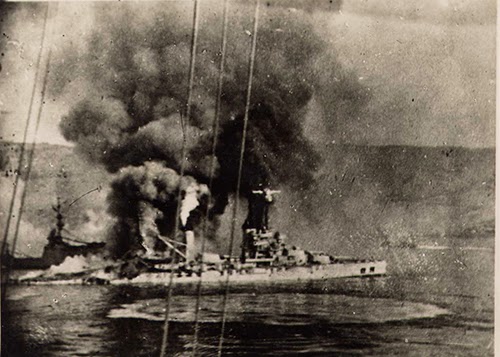Mers-el-Kébir is the town in Algeria where I was born during the French occupation of that country. It is a coastal
town with a magnificent harbour, located on the Gulf of Oran on the west coast of Algeria. Originally a Roman port, it has a long history
of maritime importance. At the end the
15th century. It was a centre of activity for pirates and was twice occupied by
the Portuguese. The Spanish held the
town from 1505 to 1792. In 1830, the
French arrived and renamed it Saint André de Mers-el-Kébir.
 |
| Mers-el-Kébir in the late Fifties/early Sixties |
 |
| The Naval Base in 1953 |
 |
| The Harbour today and Mers-el-Kébir in the background |
During World War II, following the German defeat of France in 1940, part of the French fleet sailed from Toulon and took refuge in Mers-el-Kébir. On the 3rd of July 1940, in order to prevent the French fleet from falling into German hands, the British Royal Navy led by Vice Admiral Sir James Somerville attacked the French Navy fleet. The raid resulted in the deaths of 1,297 French servicemen; about 350 wounded, the sinking of a battleship and the damaging of five other ships. This attack, part of Operation Catapult is also known as the Battle of Mers-el-Kébir.
 |
| Le Cuirasse Bretagne |
 |
| During the Bombardment |
A great deal of debate has taken place over the motivations of the British. London's point of view was that:
“The times were desperate; invasion seemed imminent; and the British Government simply could not afford to risk the Germans seizing control of the French fleet. The predominant British motive was dire necessity and self-preservation.”
 |
| The Bombardment |
My father who was 15 at the time recalled this event on many occasions throughout his life. The military section of the Mers-el-Kébir cemetery is an eerie reminder of a tragic episode in World War II history.
 |
| The Military Cemetery of Mers-el-Kébir |
 |
| The Construction of the Anti-Nuclear Subterranean Installation |
 |
| The Subterranean Installation |
This photo was taken during one of my first visit to Algeria. It was a very emotional moment for me, posing there after an absence of almost half a century.
 |
| The Entrance of the Town |
| My grandfather's apartment building |
I spent most of my Primary School years in this building. Once I reached High School, I continued my education in Oran as Mers-el-Kébir didn't provide secondary level education.
 |
| My Primary School |


loved hearing this story when you first told us & now can keep this wonderful record lv jules et jim
ReplyDeleteYou said, twice occupied by portuguese... Can you say the years(between what years) and some source?
ReplyDeleteThank you